Pottery Production In Ancient Akrotiri IELTS Reading Answers
3 min read
Updated On
-
Copy link
Table of Contents

Limited-Time Offer : Access a FREE 10-Day IELTS Study Plan!
The Academic passage ‘Pottery Production In Ancient Akrotiri’ is a reading passage that appeared in an IELTS Test.
Ideally, you should not spend more than 20 minutes on a passage. Let’s see how easy this passage is for you and if you’re able to make it in 20 minutes. If not, try more IELTS reading practice test from IELTSMaterial.com
Pottery Production In Ancient Akrotiri
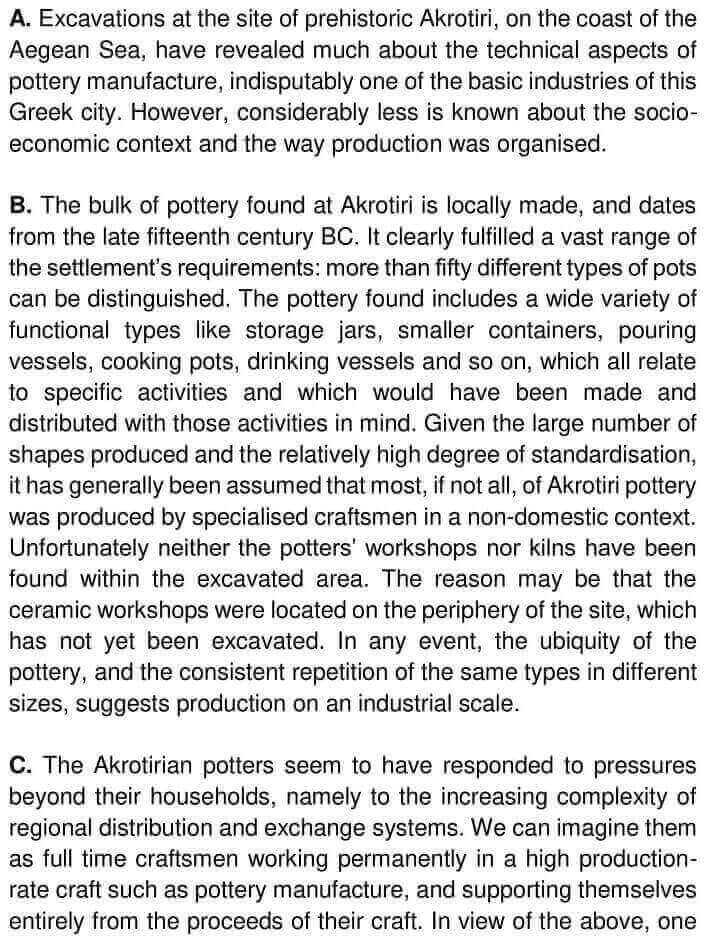
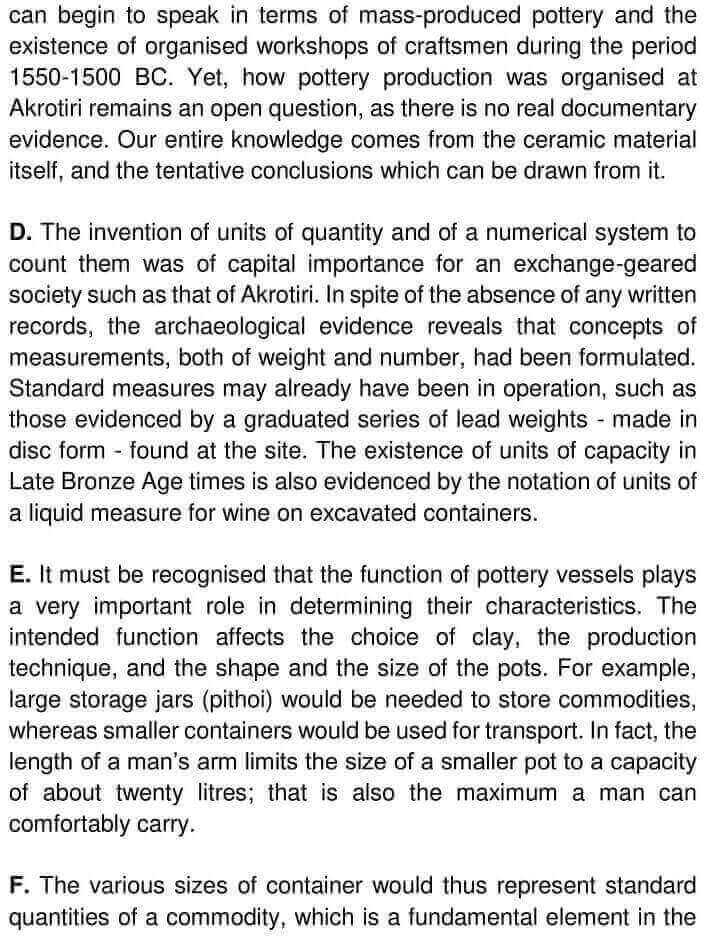
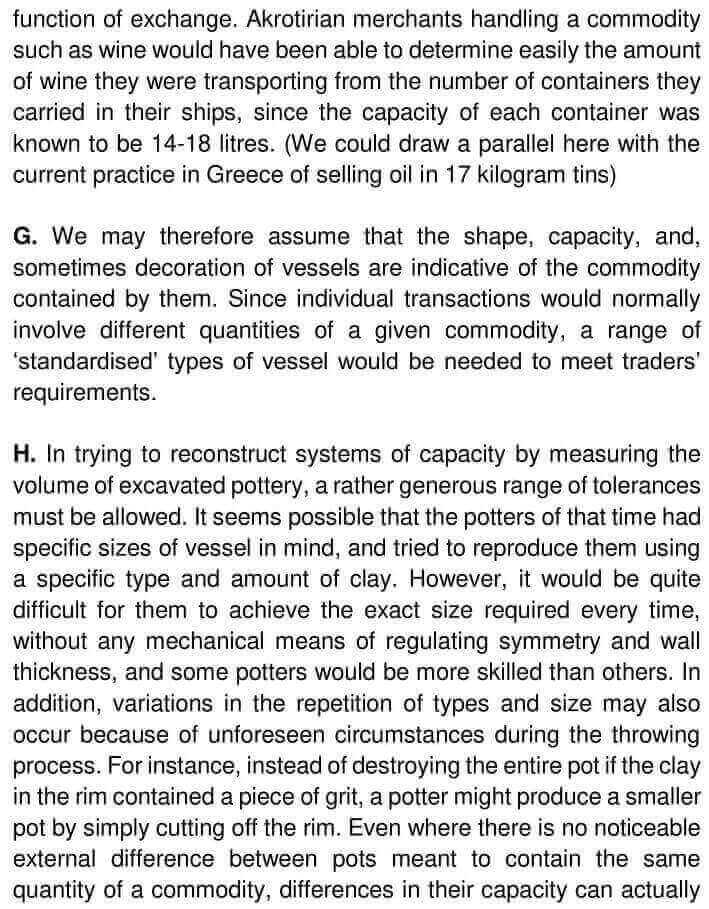
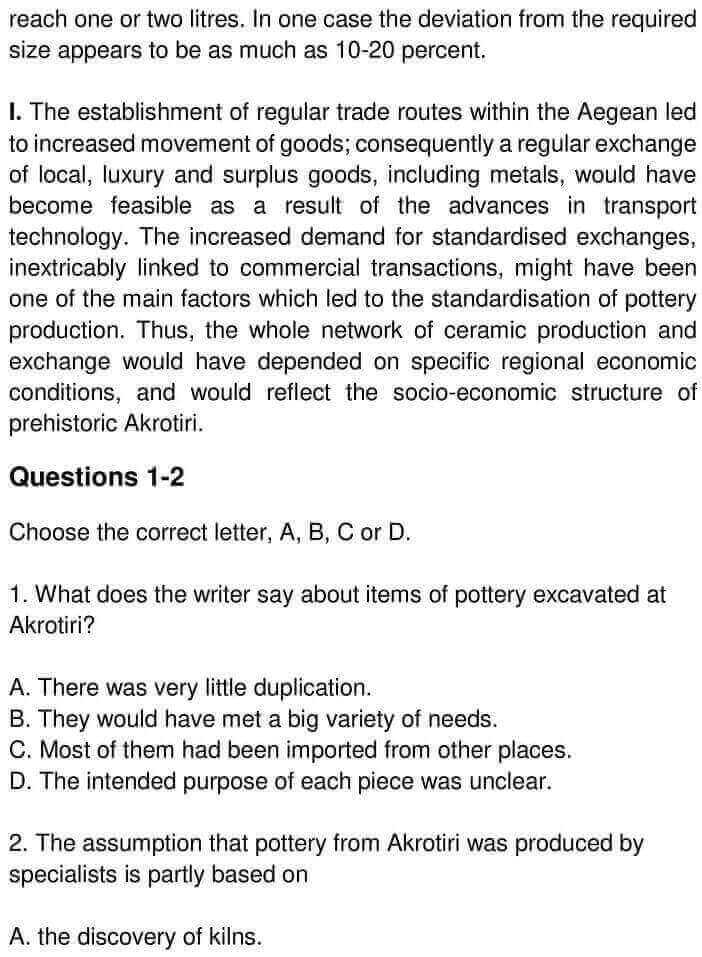
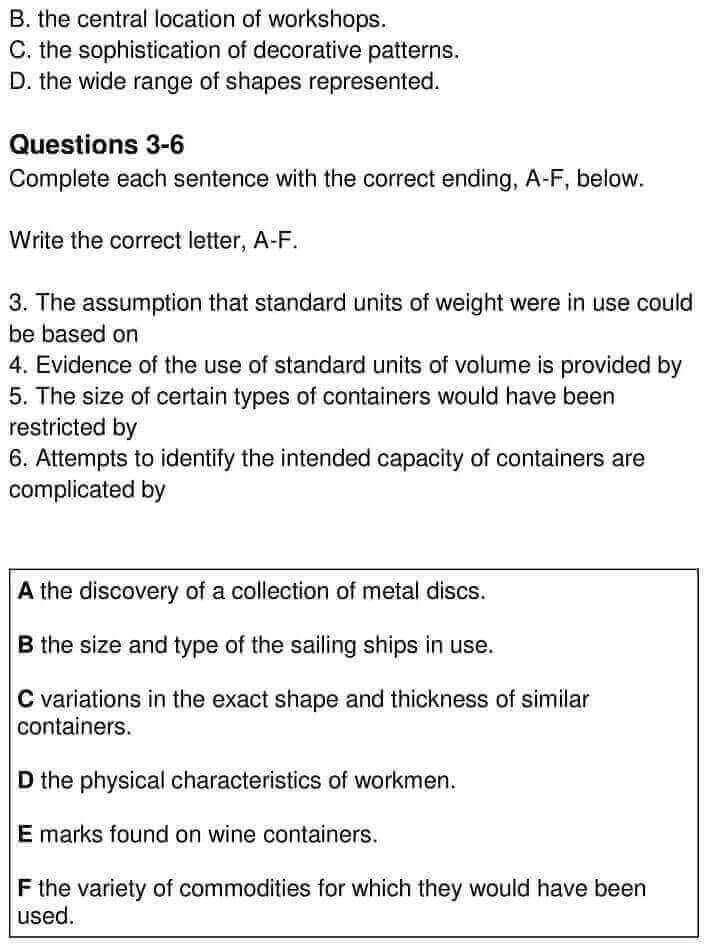
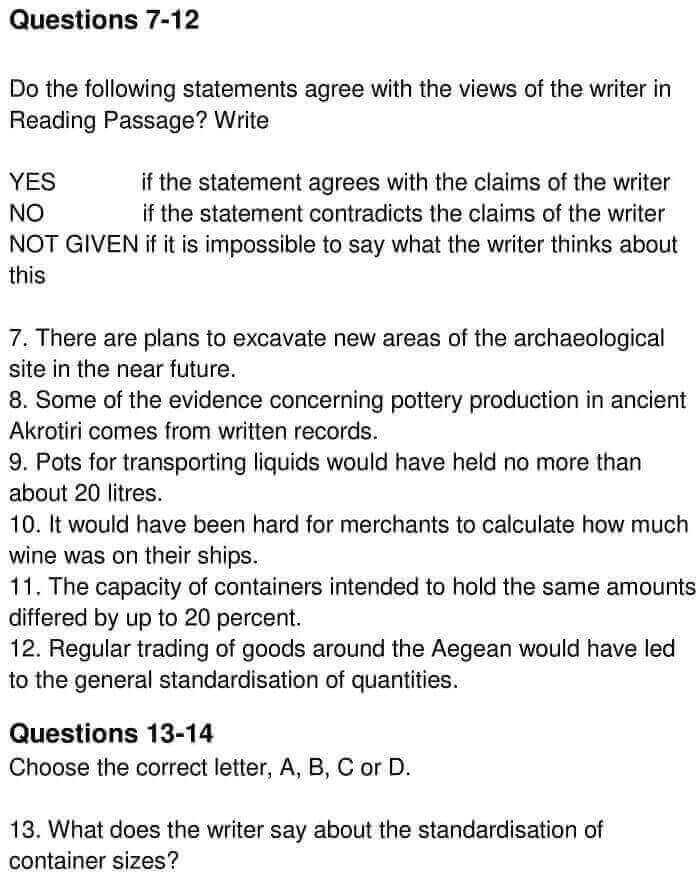
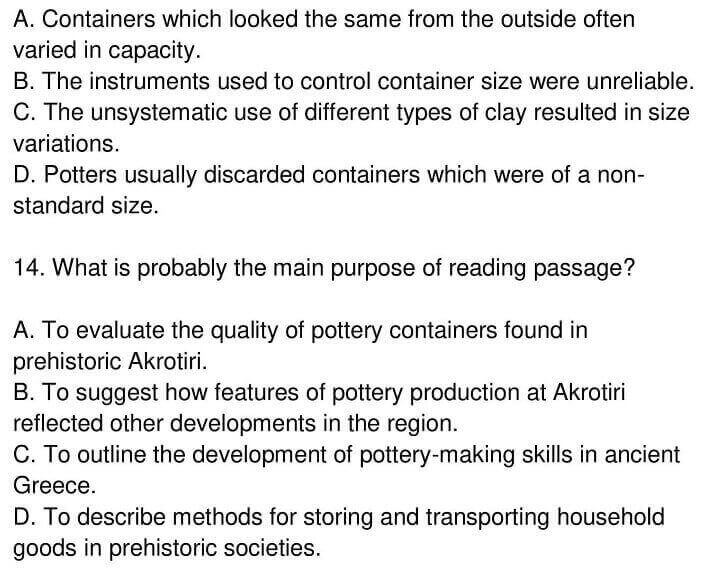
Answers
Unlock Answers
| Question number | Answer | Keywords | Location of keywords |
|---|---|---|---|
| 1 | B | The pottery found includes a wide variety of functional types like storage jars, smaller containers, pouring vessels, cooking pots, drinking vessels and so on, which all relate to specific activities | Paragraph B;
Line 3 |
| 2 | D | Given the large number of shapes produced and the relatively high degree of standardisation, it has generally been assumed that most, if not all, of Akrotiri pottery was produced by specialised craftsmen in a nondomestic context. | Paragraph B;
Line 4 |
| 3 | A | Standard measures may already have been in operation, such as those evidenced by a graduated series of lead weights – made in disc form – found at the site. | Paragraph D;
Line 3 |
| 4 | E | The existence of units of capacity in Late Bronze Age times is also evidenced by the notation of units of a liquid measure for wine on excavated containers | Paragraph D;
Last line |
| 5 | D | In fact, the length of a man’s arm limits the size of a smaller pot to a capacity of about twenty litres; that is also the maximum a man can comfortably carry. | Paragraph E;
Last line |
| 6 | C | it would be quite difficult for them to achieve the exact size required every time, without any mechanical means of regulating symmetry and wall thickness, | Paragraph H;
Line 3 |
| 7 | NOT GIVEN | – | – |
| 8 | NO | there is no real documentary evidence. Our entire knowledge comes from the ceramic material itself, and the tentative conclusions which can be drawn from it. | Paragraph C;
Last line |
| 9 | YES | the length of a man’s arm limits the size of a smaller pot to a capacity of about twenty litres; that is also the maximum a man can comfortably carry. | Paragraph E;
Last line |
| 10 | NO | Akrotirian merchants handling a commodity such as wine would have been able to determine easily the amount of wine they were transporting | Paragraph F;
Line 2 |
| 11 | YES | In one case the deviation from the required size appears to be as much as 10-20 percent. | Paragraph H;
Last line |
| 12 | YES | Regular trade routes within the Aegean led to increased movement of goods
& The increased demand for standardised exchanges, inextricably linked to commercial transactions, might have been one of the main factors which led to the standardisation of pottery production. |
Paragraph I;
Lines 1 – 2 |
| 13 | A | Even where there is no noticeable external difference between pots meant to contain the same quantity of a commodity, differences in their capacity can actually reach one or two litres. | Paragraph G;
Line 6 |
| 14 | B | Thus, the whole network of ceramic production and exchange would have depended on specific regional economic conditions, and would reflect the socio-economic structure of prehistoric Akrotiri. | Paragraph I;
Last line |
Check More IELTS Reading Answers
| The Rufous Hare Wallaby Answers | The Game Of Tennis Answers |
| The Ct Scanner Reading Answers | Affordable Art Reading Answers |
| Holiday Plus Reading Answers | Space Based Solar Power Answers |
Also check :
Practice IELTS Reading based on question types

Start Preparing for IELTS: Get Your 10-Day Study Plan Today!
Recent Articles

Nehasri Ravishenbagam

Haniya Yashfeen

Haniya Yashfeen

Haniya Yashfeen




Post your Comments